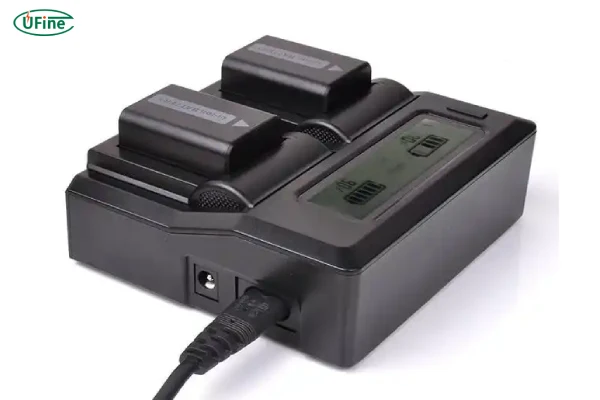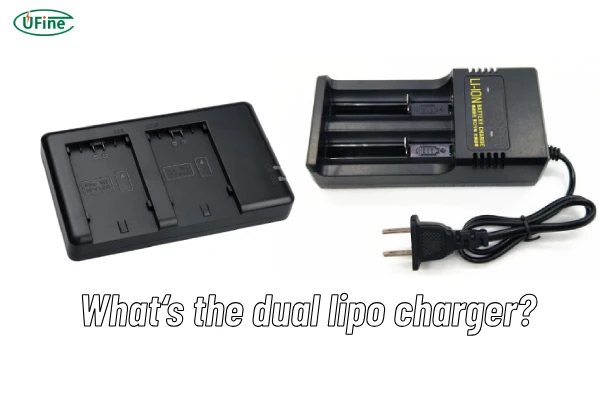For anyone working with high-powered RC vehicles, drones, or advanced electronics, a dual Lipo charger isn’t just a convenience—it’s a game-changer. The ability to charge two lithium polymer (Lipo) batteries simultaneously can significantly improve your workflow, reduce downtime, and ensure that your devices are always ready to go. But what exactly is a dual Lipo charger, and how does it benefit you? How do you choose the right one, and what should you look for to get the best performance out of your batteries?
In this guide, we’ll explore the ins and outs of dual Lipo chargers. From understanding the charging voltage range to considering the key features, you’ll get a thorough look at everything that makes a dual Lipo charger invaluable. Let’s dive in and get you closer to finding the perfect charging solution.
Part 1. What’s the dual lipo charger?
A dual Lipo charger is a specialized device designed to charge two lithium polymer batteries simultaneously. Lipo batteries are popular in RC models, drones, and electronic devices because they deliver high power without adding too much weight. However, they also require careful handling, particularly when it comes to charging, as improper charging can damage the battery or even pose safety risks.
By allowing two batteries to charge at once, a dual Lipo charger saves valuable time and ensures you can keep multiple devices powered and ready. There are two main types of dual Lipo chargers:
- Basic Dual Chargers: These chargers offer essential dual-charging functionality, with simple controls for managing the voltage and current. They’re ideal for beginners who may not need all the customization options but still want the benefit of dual charging.
- Advanced Dual Chargers: More sophisticated models allow for fine-tuning each battery’s charging parameters, such as current, voltage, and balance. These chargers are best suited for experienced users who want full control over the charging process and may need to charge batteries with different specifications.
Part 2. What’s the charging voltage range of a dual lipo charger?
One of the most important characteristics to consider in a dual Lipo charger is its charging voltage range. This range typically spans from 3.7V to 22.2V, accommodating batteries from single-cell (1S) 3.7V batteries to six-cell (6S) 22.2V batteries. This flexibility is especially beneficial for those with multiple devices or diverse power requirements, as it allows a single charger to manage different battery sizes and configurations.
Some high-end dual Lipo chargers offer even broader voltage ranges, further extending compatibility. When selecting a charger, you should confirm that its voltage range matches the specifications of your batteries. A mismatch in voltage can lead to undercharging, overcharging, or even battery damage.
Part 3. What batteries can a dual lipo charger charge?

While dual Lipo chargers are designed primarily for lithium polymer batteries, many models are versatile enough to handle a variety of other battery types. Here’s a rundown of the common batteries compatible with most dual Lipo chargers:
- Lipo (Lithium Polymer): The primary type, known for being lightweight yet powerful, commonly used in RC and drone applications.
- Li-ion (Lithium-Ion): Similar to Lipo but with a slight difference in chemistry; often used in consumer electronics.
- LiFePO4 (Lithium Iron Phosphate): These are more stable and have a longer cycle life than Lipo, but they may require different charging parameters.
- NiMH (Nickel-Metal Hydride): Often found in older RC cars and electronics; it’s a versatile type that many dual chargers can handle.
- NiCd (Nickel-Cadmium): Though less common today, some dual chargers still support this older battery type.
- Pb (Lead-Acid): Used in larger applications like car batteries; however, not all dual Lipo chargers are compatible with lead-acid batteries, so it’s essential to confirm first.
The wide compatibility of many dual Lipo chargers allows you to use one device to charge multiple types of batteries, reducing clutter and ensuring convenience. However, always check the user manual to ensure compatibility, as improper charging can damage non-Lipo batteries.
Part 4. Basic components
Understanding the basic components of a dual Lipo charger can help you appreciate how it works and what to look for when buying one. Here are the main parts:
- Power Input: Typically allows the charger to draw power either from an AC wall outlet or a DC input, often used for field charging.
- Dual Charging Channels: The core feature that enables simultaneous charging, allowing separate control over each battery’s charging process.
- Display Screen: Shows vital information like voltage, current, charging time, and battery status. Many chargers use an LCD or LED screen to ensure easy readability.
- Control Buttons or Dials: Used for setting charging parameters like battery type, voltage, and charging current.
- Cooling System: Most dual Lipo chargers have a built-in fan or cooling system to manage heat, which is critical for safe charging and preventing overheating.
- Battery Balance Ports: These ports monitor and equalize the voltage of individual cells within each battery, ensuring balanced and safe charging.
- Safety Features: These may include overcharge protection, short-circuit protection, and thermal monitoring, all of which help protect both the battery and the user.
Part 5. Pros and Cons
Pros
- Time-Saving: Charging two batteries at once is faster than waiting for one to finish before starting the next.
- Convenience: For users with multiple devices, dual charging offers a hassle-free way to keep all batteries ready.
- Versatility: Many dual Lipo chargers support different battery chemistries, making them ideal for users with various battery types.
- Enhanced Control: Advanced models provide detailed customization options for charging parameters, giving users the ability to fine-tune the process.
Cons
- Higher Cost: Dual Lipo chargers, especially advanced ones, can be more expensive than single chargers.
- Larger Size: Due to dual channels and additional features, these chargers are often bulkier, which may reduce portability.
- Learning Curve: Beginners may find the advanced settings confusing, as improper settings can damage batteries.
Part 6. Will different dual lipo chargers affect the performance of the lipo battery?
Yes, different dual Lipo chargers can indeed affect the performance and lifespan of your Lipo batteries. Here are three key factors to consider:
- Charging Speed: Fast charging is convenient, but it can increase the risk of overheating, which can reduce battery longevity.
- Voltage Accuracy: Inaccurate voltage regulation can lead to overcharging or undercharging, both of which can harm the battery.
- Heat Management: Poor cooling systems can result in overheating, which can lead to swelling, reduced battery capacity, and even safety risks.
When choosing a dual Lipo charger, prioritize models from reputable brands that are known for accurate voltage control and strong heat dissipation features. A good charger can keep your batteries in top shape, maximizing both their performance and their life.
Part 7. Buying a dual lipo charger: key considerations
If you’re ready to buy a dual Lipo charger, consider the following factors to make the best choice for your needs:
- Battery Compatibility: Check that the charger supports the voltage range and types of batteries you use.
- Power Source: Some chargers work only with AC power, while others accept both AC and DC, which can be useful for charging on the go.
- Charging Current: Higher current options allow faster charging but may reduce battery lifespan. Look for adjustable current settings.
- Charging Modes: Features like balance charging, storage mode, and fast charging are useful for maximizing battery life and performance.
- Safety Features: Overcharge protection, short-circuit protection, and temperature monitoring are essential for protecting both the battery and user.
- Display Screen: A clear display screen helps you keep track of charging status and other critical information.
- Portability: If you need a charger you can easily take with you, consider its size, weight, and any available carrying options.
Part 8. Final thoughts
A dual Lipo charger is more than just a time-saver; it’s a tool that offers safety, efficiency, and control for anyone working with multiple Lipo batteries. With the right charger, you can ensure that your batteries are always ready when you need them, without compromising their longevity. Taking the time to choose a quality dual Lipo charger can make all the difference, turning battery maintenance into a simple, streamlined process.
Related Tags:
More Articles

How to Choose the Best Floor Scrubber Battery for Commercial Cleaning?
Selecting the ideal floor scrubber battery ensures a long runtime, rapid charging, and minimal maintenance for efficient commercial cleaning operations.
Battery for Blower vs Battery for Leaf Vacuum: Which One Should You Choose?
Battery for blower vs leaf vacuum—learn the key differences in power, fit, and runtime to choose the right battery for your outdoor tool needs.
How to Choose the Right Battery for Blower?
Choosing the right blower battery? Consider voltage, capacity, chemistry & usage. This guide helps match the best battery for peak performance.
How to Choose the Best Insulated Battery Box for Lithium Batteries?
Choosing the Best Insulated Battery Box for Lithium Batteries? Discover key factors such as size, material, and safety for optimal protection and performance.
7 Critical Elements on a Lithium Battery Shipping Label
What must be on a lithium battery shipping label? Learn 7 key elements to ensure safety, legal compliance, and correct handling across all transport modes.




